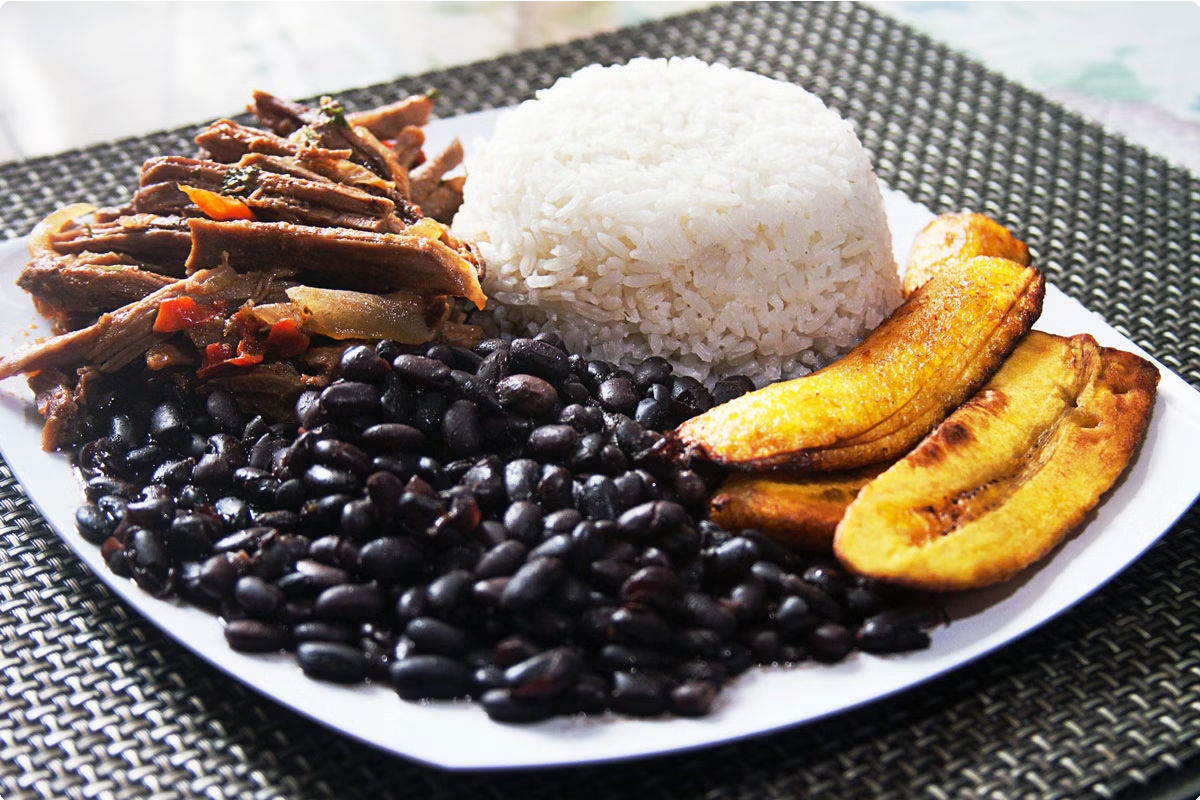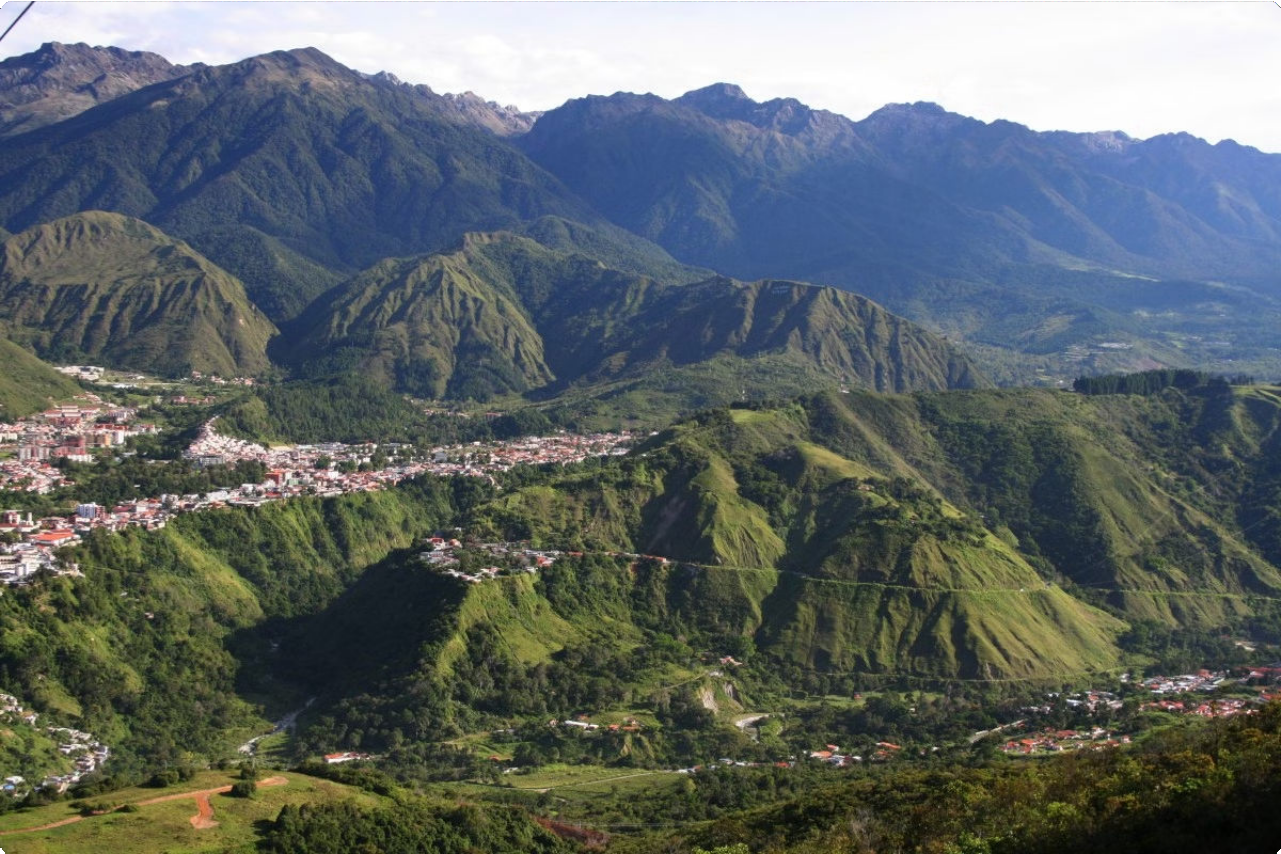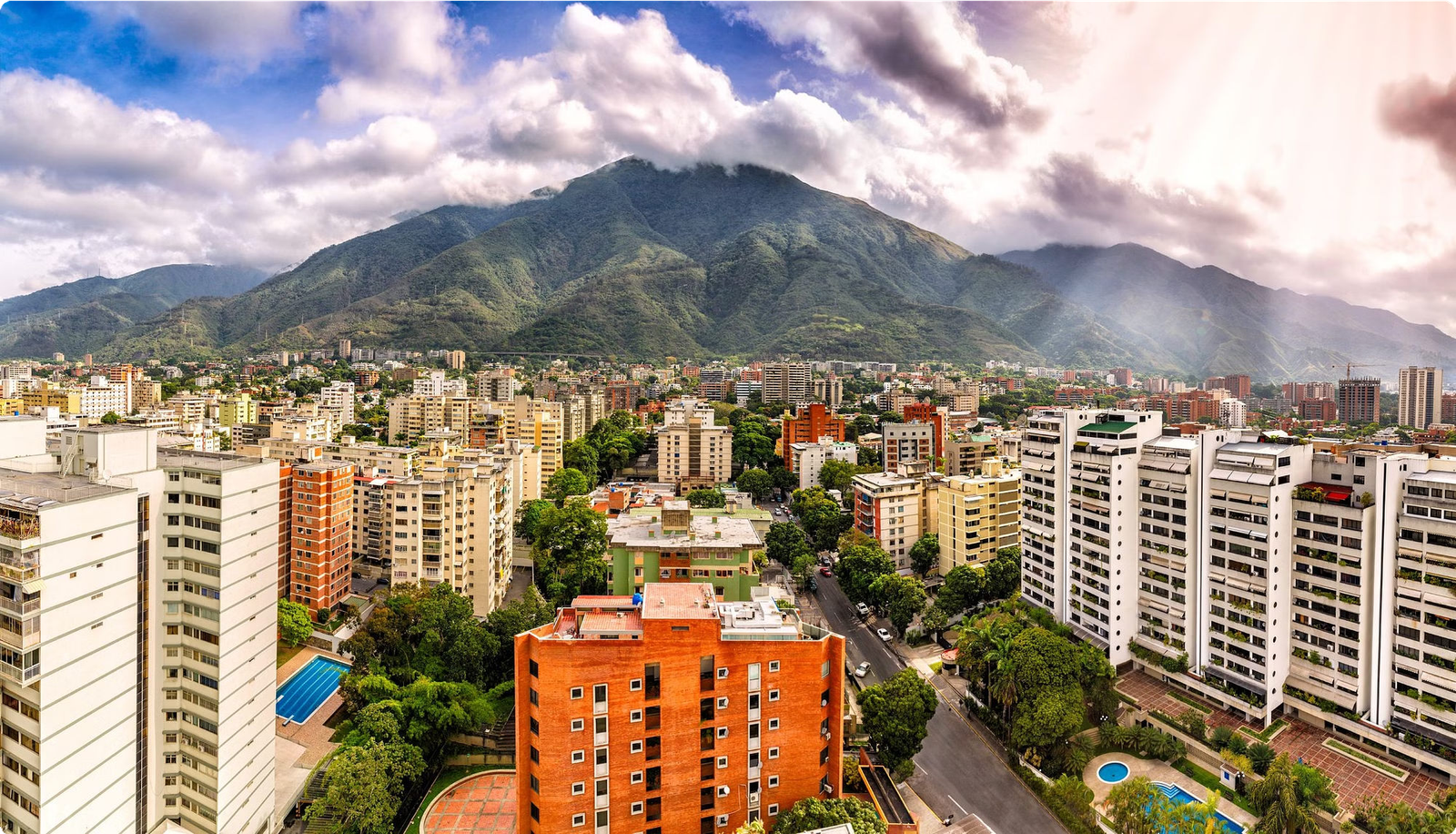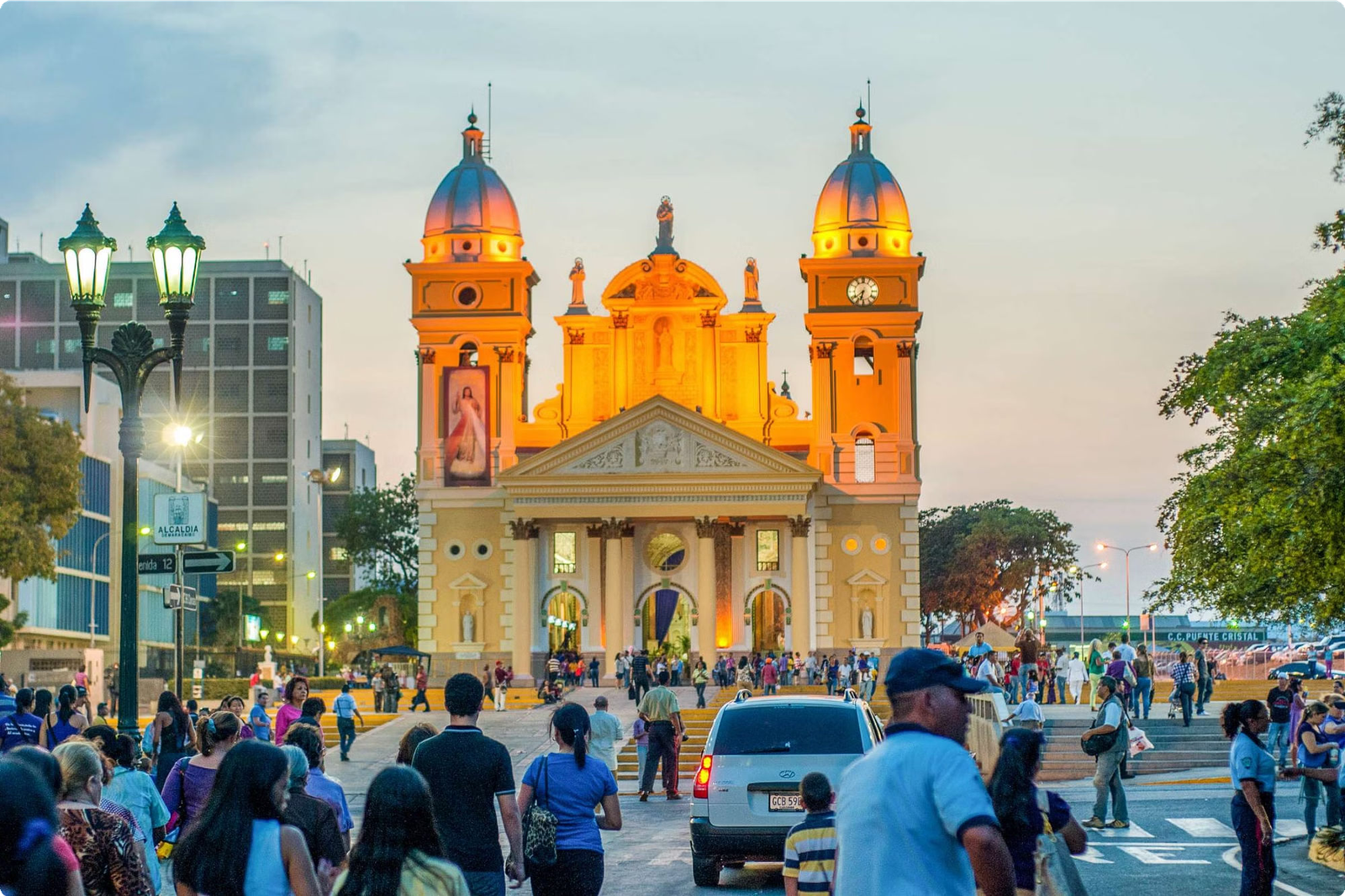Venezuela
Discover Venezuela
Venezuela, a country located on the northern coast of South America, boasts a rich tapestry of culture, history, and natural beauty. Its diverse landscape encompasses the Andes Mountains, stunning Caribbean beaches, and the Amazon Rainforest, making it a haven for adventure seekers and nature enthusiasts alike. As one of the world’s top oil exporters, Venezuela’s economy has a significant impact on global markets. From the lively rhythms of salsa and merengue to the vibrant colors of traditional clothing, Venezuelan culture is a vibrant fusion of indigenous, European, and African influences. The country’s culinary delights, such as arepas, cachapas, and pabellón criollo, offer a tantalizing experience for food lovers.

Exploring Venezuela also means encountering the iconic Angel Falls, the world’s highest uninterrupted waterfall, and the awe-inspiring tepuis that inspired Sir Arthur Conan Doyle’s “The Lost World.” From the bustling streets of Caracas to the historic towns of Coro and Ciudad Bolívar, Venezuela’s cities are a blend of modernity and colonial charm. With its warm climate, breathtaking landscapes, and friendly locals, Venezuela is an enchanting destination for travelers seeking unforgettable experiences.
Flag and National Symbols
Venezuela’s flag consists of three equal horizontal bands of yellow, blue, and red with the National Coat of Arms on the upper hoist-side of the yellow band. The coat of arms includes a crest with a horse and capped Phrygian hat, which represents freedom. On the sides are cornucopias spilling out coins and fruits, symbolizing wealth and abundance. The yellow represents the wealth of the country, the blue represents independence from Spain, and the red symbolizes courage and the blood of those who died in the country’s struggle for independence.

The national symbols of Venezuela also include the national anthem, “Gloria al Bravo Pueblo,” which translates to “Glory to the Brave People.” The national flower is the orchid, and the national tree is the Araguaney. These symbols play a significant role in the cultural identity and pride of the Venezuelan people.
Geography and Map
Venezuela, located on the northern coast of South America, is characterized by diverse geography and natural beauty. The country boasts a variety of landscapes, including the Andes Mountains, vast plains, dense rainforests, and stunning coastline along the Caribbean Sea. The Orinoco River, one of the longest in South America, flows through the country, contributing to its rich biodiversity and natural resources.

The map of Venezuela showcases its diverse regions, from the rugged terrain of the Cordillera de la Costa to the expansive plains of the Llanos. The country’s strategic location and varied topography make it a unique and captivating destination for travelers and explorers alike.
Currency and Economy
Venezuela’s currency is the Bolivar, named after the South American liberator Simon Bolivar. The economy of Venezuela is largely based on the petroleum industry and has been historically fluctuating due to its heavy dependence on oil exports. In recent years, the country has faced economic challenges, including high inflation rates and shortages of basic goods. The government has implemented various economic policies to address these issues, but the economic situation remains a topic of debate both domestically and internationally.

In addition to its oil industry, Venezuela also has diverse agricultural, mining, and manufacturing sectors contributing to its economy. The country’s economic landscape is marked by a mix of challenges and potential, making it an area of interest for economists and policymakers around the world.
Culture and Traditions
Venezuelan culture is a vibrant tapestry of European, indigenous, and African influences, resulting in a rich and diverse heritage. Traditional Venezuelan clothing varies by region, with vibrant colors and intricate designs reflecting the country’s multicultural background. Festivals and events play a significant role in showcasing Venezuelan traditions, with lively music and dance performances captivating audiences.

The indigenous communities in Venezuela have preserved their customs, adding invaluable elements to the country’s cultural identity. Each region of Venezuela has its own unique traditions and celebrations, which are a testament to the country’s cultural richness and diversity.
Famous Venezuelan Dances
Joropo
Joropo is a traditional dance and music style from Venezuela, with strong roots in the llanos (plains) region. The dance features energetic footwork, fast-paced movements, and vibrant costumes, often accompanied by the sounds of the cuatro and maracas.

Tamunangue
Tamunangue is a dance with African, Spanish, and indigenous influences, primarily performed in the Lara state. The dance represents a spiritual journey, often performed in honor of Saint Anthony. It features intricate choreography and rhythmic music.
Traditional Venezuelan Food
Arepas
Arepas are a staple of Venezuelan cuisine, made from cornmeal and typically filled with a variety of fillings such as shredded beef, black beans, cheese, or avocado. They are often grilled, baked, or fried and are enjoyed at any time of the day.

Pabellón Criollo
Pabellón Criollo is Venezuela’s national dish, consisting of shredded beef, black beans, rice, and fried plantains. This flavorful and hearty dish represents the fusion of African, indigenous, and Spanish culinary influences.

Cachapa
Cachapas are sweet corn pancakes, often filled with cheese or served with a side of fresh white cheese. They are a delightful combination of sweet and savory flavors, commonly enjoyed for breakfast or as a snack.

Tajadas
Tajadas are ripe plantains sliced lengthwise and fried until golden. They are a popular side dish or snack, offering a delicious balance of sweetness and crispiness.

Venezuelan Music
Traditional Joropo Music
Joropo music is a traditional Venezuelan music style originating from the plains. Its lively rhythms and melodic tunes are often accompanied by the harp, maracas, and cuatro, creating a vibrant and energetic sound that is deeply rooted in Venezuelan culture.
Vibrant Salsa Music
Salsa music has a strong presence in Venezuela. It is characterized by its infectious beats and intricate dance movements, making it a popular choice for both listening and dancing. Venezuelan salsa often combines elements of traditional folk music with modern influences, resulting in a unique and captivating sound.
Sports in Venezuela
Baseball Dominance
Baseball is the most popular sport in Venezuela, with a rich history and strong presence at both amateur and professional levels. The country has produced numerous Major League Baseball players, and the passion for the sport among Venezuelans is unmatched.
Beach Volleyball Scene
Venezuela also has a thriving beach volleyball community, with beautiful coastlines providing the perfect backdrop for competitive beach volleyball tournaments. The sport has gained popularity and continues to attract both local and international players.
Mountain Biking Adventures
With its diverse landscapes, Venezuela offers excellent opportunities for mountain biking enthusiasts. From the Andes to the Gran Sabana, cyclists can explore breathtaking trails and experience the natural beauty of the country.
Emerging Football Talent
While baseball may dominate the sports scene, football (soccer) is also growing in popularity. The country has been producing talented footballers who are making a mark on the international stage, contributing to the global football community.
Venezuelan Arts and Literature
Classic Novels
Venezuela has a rich literary tradition, with classic novels such as “Doña Bárbara” by Rómulo Gallegos and “Iphigenia” by Teresa de la Parra. These works explore the complexities of Venezuelan society, culture, and history, offering profound insights into the country’s identity.
Mural Art
The streets of Venezuela are adorned with vibrant and thought-provoking murals, showcasing the country’s artistic expression. From political statements to cultural celebrations, these murals serve as a visual narrative of Venezuela’s social and historical evolution.
Traditional Instruments
Venezuelan music is intricately linked to its literature and arts, with traditional instruments such as the cuatro and maracas playing a pivotal role in the country’s cultural identity. These instruments are not just tools for music but also symbols of national pride and heritage.
Expressive Poetry
Venezuelan poets have crafted deeply expressive verses that reflect the soul of the nation. From the poignant works of Andrés Eloy Blanco to the modern poetry of Rafael Cadenas, Venezuelan poetry captures the essence of the country’s emotions, struggles, and aspirations.
Venezuelan Festivals and Holidays
Carnival
Carnival in Venezuela is a vibrant and colorful celebration known for its elaborate costumes, music, and dance. It is a time for lively parades, street parties, and cultural performances that showcase the diversity of the country’s traditions.

Corpus Christi
Corpus Christi is an important religious holiday in Venezuela, celebrated with processions, church services, and traditional dances. The streets are adorned with colorful decorations, and families come together to honor this sacred occasion.

Día de los Muertos
Although Día de los Muertos is a Mexican holiday, it is also celebrated in some regions of Venezuela with reverence and festivity. Families visit cemeteries to pay respect to their departed loved ones, creating altars and offering traditional food and flowers.
Venezuelan Celebrities
Gabriela Spanic
Gabriela Spanic is a renowned Venezuelan actress and singer. She gained international fame for her roles in telenovelas, including her iconic portrayal of the twin sisters in “La Usurpadora”. With her talent and charisma, she has captivated audiences worldwide and remains an influential figure in the entertainment industry.

Edgar Ramirez
Edgar Ramirez is a highly acclaimed Venezuelan actor known for his versatile performances in both Hollywood and international films. His compelling work in movies like “Carlos” and “The Assassination of Gianni Versace” has earned him numerous awards and accolades, solidifying his status as a distinguished talent in the cinematic world.

Lele Pons
Lele Pons is a multi-talented Venezuelan-American internet personality, actress, singer, and author. She has achieved significant success through her comedic vines, YouTube videos, and music, establishing herself as a prominent figure in the digital entertainment sphere and inspiring a new generation of content creators.

Best Places to Visit in Venezuela
Angel Falls
Angel Falls, located in Canaima National Park, is the world’s highest uninterrupted waterfall, plunging over 3,200 feet. The breathtaking natural beauty of the falls is a must-see for any traveler visiting Venezuela. Visitors can take guided tours to witness the awe-inspiring cascades surrounded by lush tropical rainforest.
Los Roques Archipelago
The Los Roques Archipelago is a stunning collection of islands and cays, renowned for their pristine white sand beaches, crystal-clear turquoise waters, and vibrant marine life. It’s a paradise for snorkeling, scuba diving, and simply relaxing on picture-perfect beaches.
Margarita Island
Margarita Island, also known as the “Pearl of the Caribbean,” boasts stunning beaches, charming colonial towns, and a rich cultural heritage. Visitors can indulge in water sports, explore historic sites, and savor delicious local cuisine.
Canaima National Park
Canaima National Park is a UNESCO World Heritage site, famous for its dramatic tepuis (tabletop mountains), vast savannas, and pristine rivers. Travelers can embark on adventures like trekking to Mount Roraima, exploring the mesmerizing lagoon of Canaima, and experiencing the indigenous Pemon culture.
Angel Falls
Angel Falls, also known as Salto Ángel, is the world’s highest uninterrupted waterfall with a height of 979 meters (3,212 feet) and a plunge of 807 meters (2,648 feet). It is located in the Canaima National Park in the Gran Sabana region of Venezuela.

The magnificent waterfall is named after American aviator Jimmy Angel, who was the first to fly over the falls in 1933. The surrounding lush greenery and sheer beauty of the cascading water make Angel Falls a captivating and must-see natural wonder.
Visitors can take guided tours to witness the grandeur of Angel Falls up close, trek through the tropical rainforest, and explore the rich biodiversity of the area. The indigenous Pemon people, who inhabit the region, also offer unique cultural experiences for visitors.
Los Roques Archipelago
Located in the Caribbean Sea, Los Roques Archipelago is a breathtaking collection of islands and cays that make up one of the most beautiful national parks in Venezuela. The crystal-clear waters, pristine white sandy beaches, and coral reefs make it a paradise for nature lovers, snorkelers, and beach enthusiasts. The archipelago is famous for its picturesque landscape, diverse marine life, and bird sanctuaries.

Visitors to Los Roques can enjoy activities such as kite surfing, scuba diving, fishing, and bird watching. The main village, Gran Roque, offers a charming and laid-back atmosphere, with colorful houses and quaint restaurants serving fresh seafood. This secluded and peaceful destination is a perfect retreat for those seeking tranquility and natural beauty.
Margarita Island
Margarita Island, also known as the “Island of Pearls,” is a stunning destination located in the Caribbean Sea. With its pristine beaches, crystal-clear waters, and vibrant culture, it is a popular destination for tourists seeking relaxation and natural beauty. The island is famous for its coastal charm, offering a variety of water sports such as snorkeling, diving, and sailing.

Visitors can explore the charming villages, sample delicious seafood cuisine, and indulge in shopping at the numerous local markets. Margarita Island is also renowned for its warm and welcoming locals, making it an ideal place for immersing in the laid-back island life and experiencing the unique blend of Caribbean and Venezuelan culture.
Canaima National Park
Canaima National Park is located in southeastern Venezuela and is one of the most famous national parks in the country. It is known for its dramatic landscapes, including plateaus, waterfalls, and unique tabletop mountains called tepuis. The park is also home to Angel Falls, the highest waterfall in the world, cascading from the top of Auyantepui, one of the most iconic tepuis in the region.

Visitors to Canaima National Park can explore its diverse ecosystems, including tropical rainforests, savannas, and rivers, providing opportunities for birdwatching, hiking, and wildlife observation. The park’s rich biodiversity and breathtaking scenery make it a UNESCO World Heritage Site and a must-visit destination for nature lovers and adventure seekers.
Merida
Merida is a charming city located in the Andes mountains of Venezuela, known for its stunning natural beauty and rich cultural heritage. It is often referred to as the “City of Gentlemen” due to its friendly and welcoming atmosphere. The city is also a popular destination for adventure seekers, offering opportunities for hiking, paragliding, and exploring the surrounding mountains.

Visitors to Merida can experience the unique blend of colonial architecture, modern amenities, and vibrant street life. The city is home to the famous Cable Car of Merida, one of the highest and longest cable cars in the world, providing breathtaking views of the Andes. Additionally, Merida is a hub for traditional Andean crafts and folk art, making it a perfect place to explore the local culture and traditions.
Caracas
Caracas, the capital and largest city of Venezuela, is situated in a beautiful valley surrounded by the Cerro Avila Mountain. It holds a rich blend of modernity and history, with a vibrant cultural scene.
The city is home to many modern skyscrapers, including the iconic Simón Bolívar Tower that dominates the skyline. Visitors can explore the historical center to admire the colonial architecture, visit the birthplace of Simón Bolívar at Casa Natal, and walk around Plaza Bolívar, the city’s main square.

Caracas offers a variety of cultural attractions, such as museums, theaters, and art galleries. The city’s cuisine is a delightful mix of traditional Venezuelan dishes and international flavors, and the lively nightlife makes it a hotspot for entertainment.
Maracaibo
Maracaibo is the second-largest city in Venezuela, known for its vibrant culture, lively music scene, and stunning sunsets. Located in the northwest of the country, it is a major economic and commercial hub, especially famous for its oil industry and the iconic Lake Maracaibo.

The city offers a unique blend of modern infrastructure and colonial architecture, with a rich history dating back to the 16th century. Visitors can explore the charming Old Town, filled with colorful buildings and picturesque cobblestone streets. Maracaibo is also home to a variety of museums, art galleries, and cultural events, showcasing the region’s artistic heritage and indigenous traditions.
With its bustling markets, delicious street food, and energetic nightlife, Maracaibo is a must-visit destination for those seeking an authentic Venezuelan experience.
Valencia
Valencia, a city located in the north-central region of Venezuela, is known for its vibrant culture and beautiful landscapes. It is one of the country’s most populous cities and is often referred to as the “Industrial capital of Venezuela” due to its significant role in the nation’s manufacturing sector.

The city is nestled in a valley and is surrounded by mountains, offering stunning views and outdoor activities for visitors. It is also renowned for its delicious gastronomy, with local specialties such as arepas, pabellón criollo, and chicha. Valencia hosts various cultural events and festivals throughout the year, showcasing traditional music, dance, and art.
Visitors to Valencia can explore the unique architecture of the city, visit museums and historical sites, and experience the warm hospitality of the local people. The city’s rich history and modern charm make it a must-visit destination for anyone exploring Venezuela.
Barquisimeto
Barquisimeto is a city located in the northwestern region of Venezuela, known for its vibrant culture and rich history. It is the capital of the Lara state and is often referred to as the “musical capital of Venezuela” due to its strong musical traditions and contributions to the country’s music scene.

The city is also celebrated for its architectural beauty, with stunning colonial-era buildings and modern structures blending seamlessly. Visitors to Barquisimeto can explore its charming plazas, museums, and art galleries, providing a glimpse into the city’s cultural heritage.
With a lively street life, delicious local cuisine, and warm hospitality, Barquisimeto offers a delightful experience for travelers seeking to immerse themselves in authentic Venezuelan culture.
Puerto La Cruz
Puerto La Cruz is a charming city located on the northeastern coast of Venezuela, known for its stunning beaches and vibrant atmosphere. The city boasts a rich cultural heritage, with a mix of modern amenities and historical landmarks. Visitors can enjoy the beautiful Playa Puerto Cruz, a popular beach with crystal-clear waters and soft golden sands, perfect for sunbathing and water activities.

The city is also famous for its delicious seafood cuisine, offering a wide variety of fresh catches from the Caribbean Sea. Puerto La Cruz is a gateway to the beautiful Margarita Island and the picturesque Mochima National Park, making it an ideal destination for nature enthusiasts and beach lovers.
Isla de Coche
Isla de Coche, also known as Coche Island, is a stunning tropical paradise situated off the northeastern coast of Venezuela. With its pristine white-sand beaches and crystal-clear turquoise waters, it is a haven for travelers seeking relaxation and natural beauty. The island offers a serene and tranquil atmosphere, making it an ideal destination for beach lovers and sun-seekers.

The island’s charm extends beyond its beaches, as visitors can explore the local culture and cuisine. From freshly caught seafood to vibrant local crafts, Isla de Coche provides a delightful blend of relaxation and cultural experiences. Whether it’s unwinding on the beach, indulging in delicious seafood, or immersing oneself in the island’s unique ambiance, Isla de Coche promises an unforgettable tropical retreat.
Conclusion
Venezuela is a country with a rich tapestry of culture, vibrant traditions, and breathtaking natural beauty. From the awe-inspiring Angel Falls to the stunning Los Roques Archipelago, Venezuela offers an array of experiences for travelers. Its diverse cuisine, lively music, and colorful festivals add to the allure of this South American gem. As a nation known for its warm hospitality and friendly locals, Venezuela welcomes visitors with open arms. Whether exploring the Andean peaks in Merida or savoring the flavors of traditional Venezuelan dishes, this captivating country promises unforgettable memories.

With its intriguing blend of history, art, and natural wonders, Venezuela beckons adventurers and seekers of beauty. Whether it’s the bustling streets of Caracas, the serene beaches of Isla de Coche, or the lush greenery of Canaima National Park, every corner of Venezuela tells a story. By immersing oneself in the culture, cuisine, and festivities, visitors can truly experience the heart and soul of this enchanting nation. Venezuela is not just a destination; it’s an immersive, unforgettable journey that leaves an indelible impression on those who explore its many wonders.